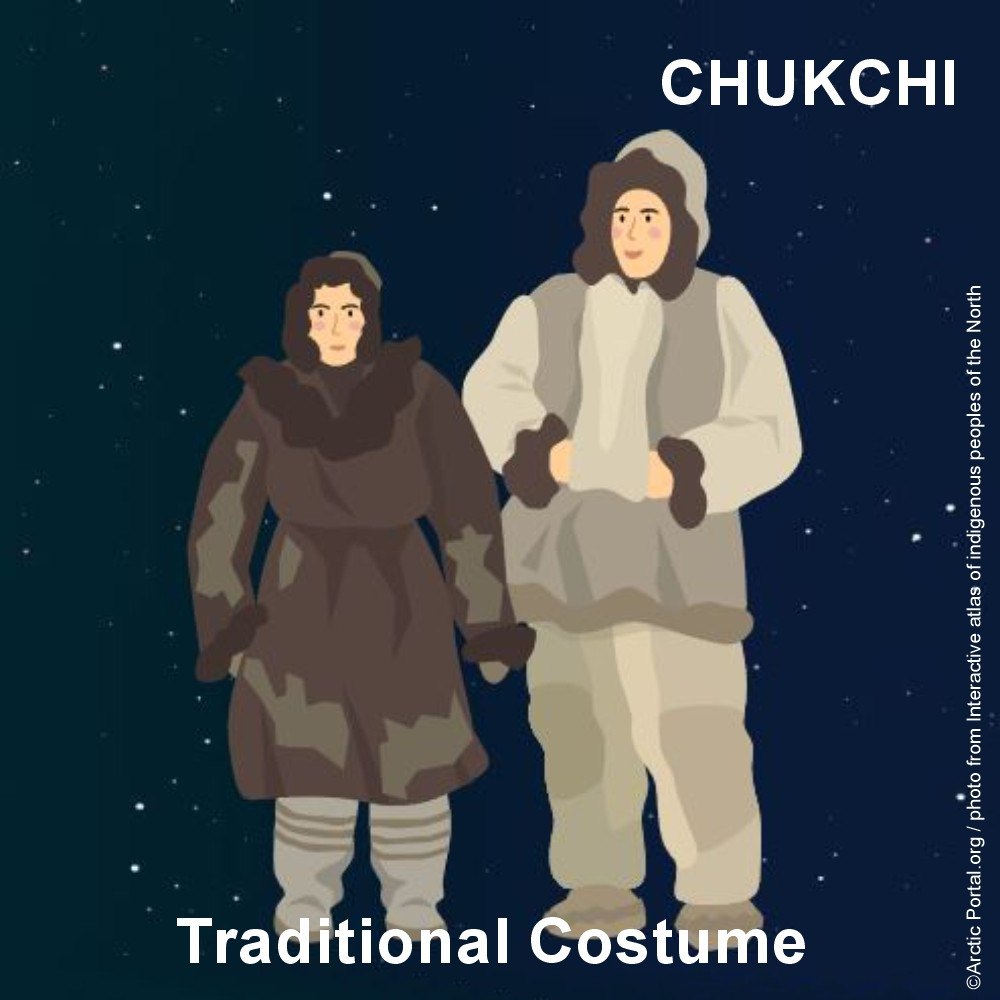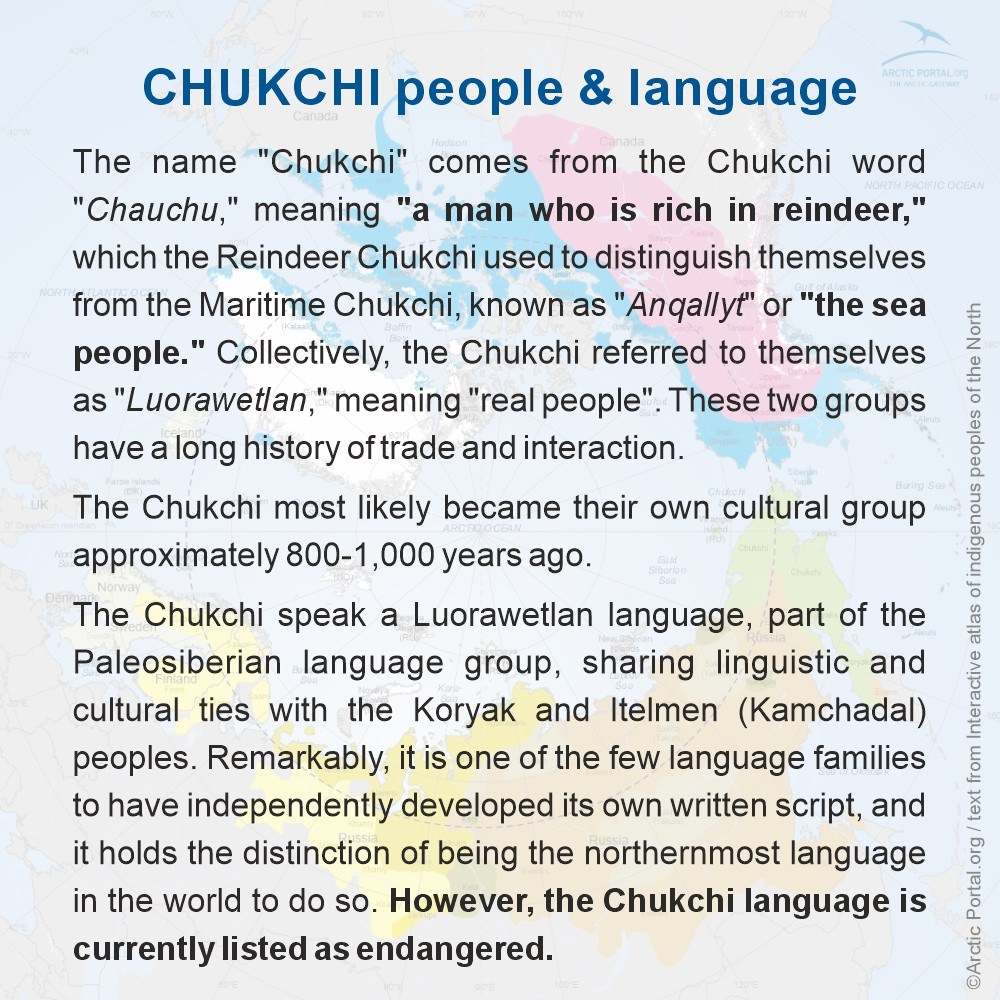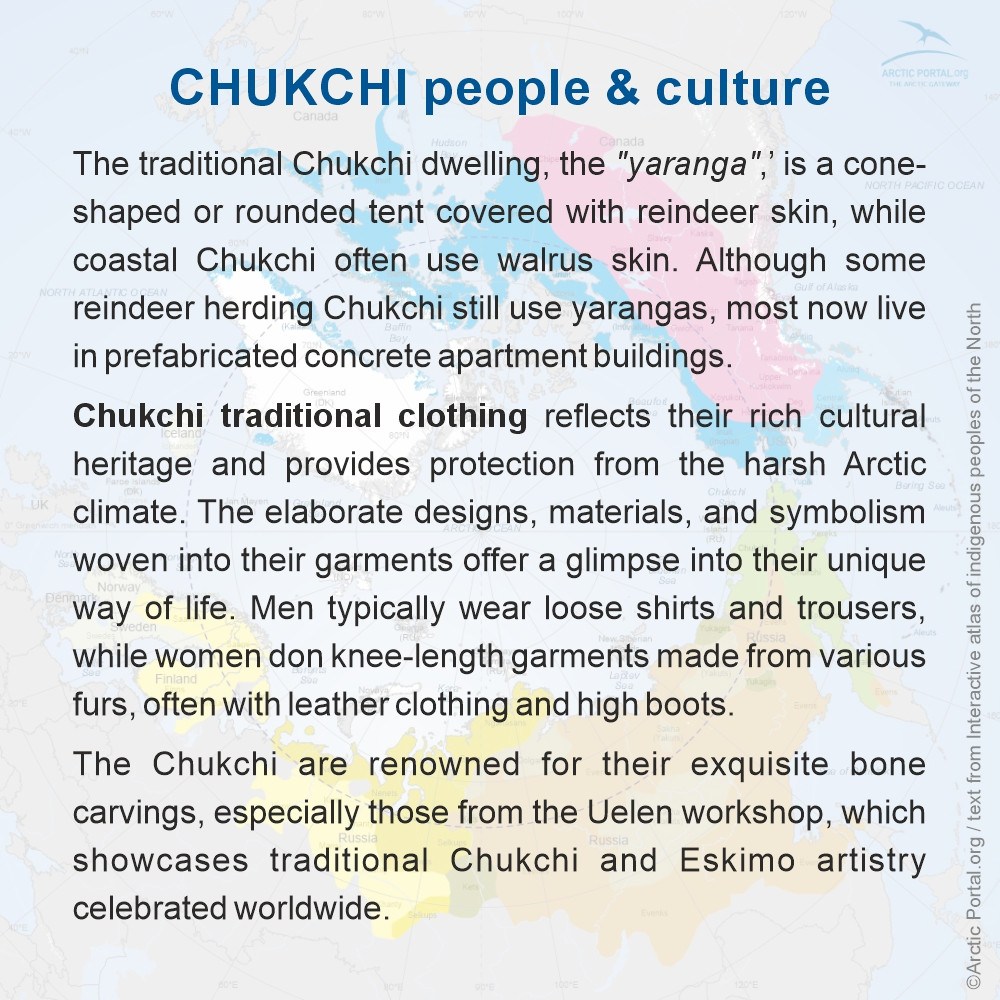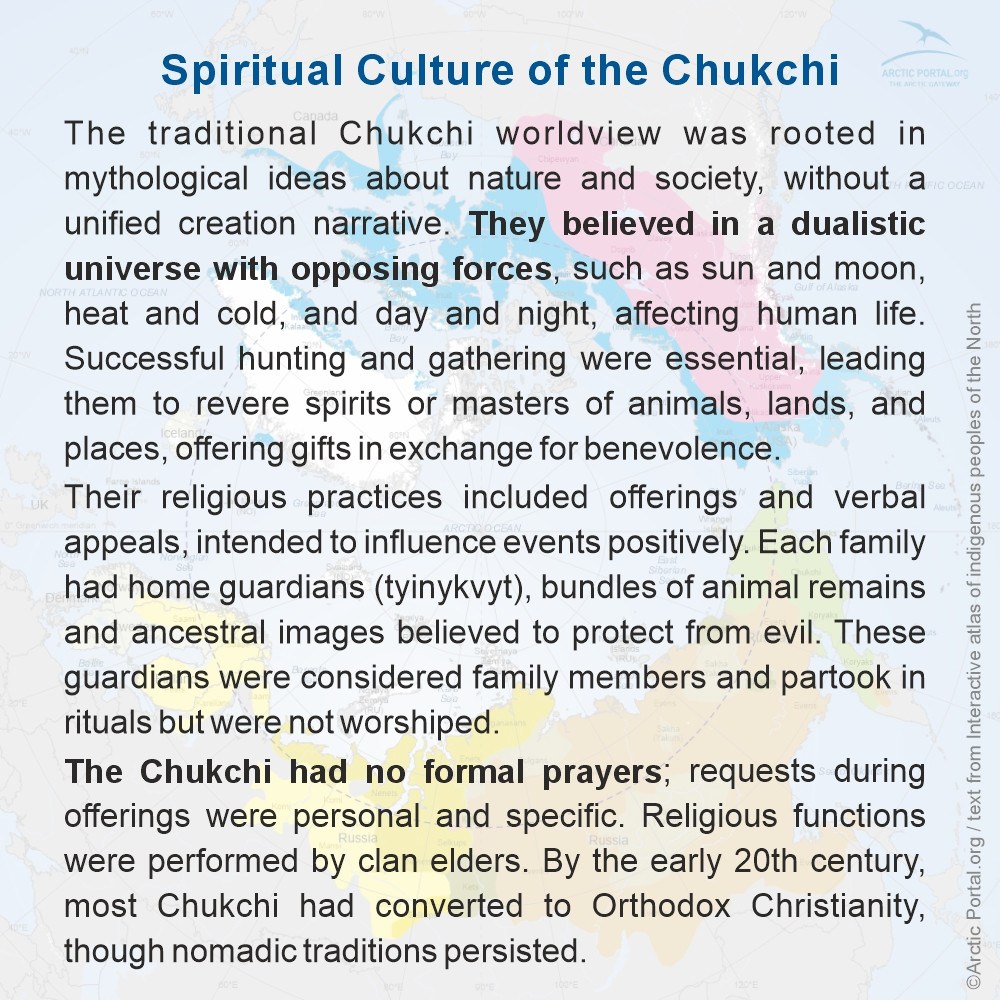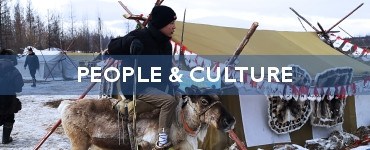The Chukchi people are an indigenous group inhabiting the northeasternmost part of Siberia, in the Chukotka Autonomous District of Russia traditionally divided into two ethnographic groups: the Reindeer Chukchi (RC) and the Maritime Chukchi (MC).
The Chukchi people are an indigenous group inhabiting the northeasternmost part of Siberia, in the Chukotka Autonomous District of Russia traditionally divided into two ethnographic groups: the Reindeer Chukchi (RC) and the Maritime Chukchi (MC).
The RC, nomadic herders, lived primarily off domesticated reindeer, providing transport, milk, meat, and pelts, while residing in tents and moving seasonally. In contrast, the MC hunted Arctic sea mammals such as walrus, seals, and whales, and lived in fixed semisubterranean villages, using boats with wooden frames and skin covers for transportation. The basic socioeconomic unit for the MC was the boat team of several related families, sometimes including neighbours, wheras for the RC, it was the encampment of families herding together.
According to the 2020 All-Russian Population Census, the total Chukchi population is 16,228 people, with 7,641 men and 8,587 women.
Chukchi Language
The name "Chukchi" comes from the Chukchi word "Chauchu," meaning "a man who is rich in reindeer," which the Reindeer Chukchi used to distinguish themselves from the Maritime Chukchi, known as "Anqallyt" or "the sea people". Collectively, the Chukchi referred to themselves as "Luorawetlan," meaning "real people". These two groups have a long history of trade and interaction.
The Chukchi most likely became their own cultural group approximately 800-1,000 years ago.
The Chukchi speak a Luorawetlan language, part of the Paleosiberian language group, sharing linguistic and cultural ties with the Koryak and Itelmen (Kamchadal) peoples. Remarkably, it is one of the few language families to have independently developed its own written script, and it holds the distinction of being the northernmost language in the world to do so. However, the Chukchi language is currently listed as endangered.
Chukchi Culture
The traditional Chukchi dwelling, the "yaranga",' is a cone-shaped or rounded tent covered with reindeer skin, while coastal Chukchi often use walrus skin. Although some reindeer herding Chukchi still use yarangas, most now live in prefabricated concrete apartment buildings.
Chukchi traditional clothing reflects their rich cultural heritage and provides protection from the harsh Arctic climate. The elaborate designs, materials, and symbolism woven into their garments offer a glimpse into their unique way of life. Men typically wear loose shirts and trousers, while women don knee-lenght garments made from various furs, often with leather clothing and high boots.
The Chukchi are renowned for their exquisite bone carvings, especially those from the Uelen workshop, which showcases traditional Chukchi and Eskimo artistry celebrated worldwide.
Spiritual Culture of the Chukchi
The traditional Chukchi worldview was rooted in mythological ideas about nature and society, without a unified creation narrative. They believed in a dualistic universe with opposing forces, such as sun and moon, heat and cold, and day and night, affecting human life. Successful hunting and gathering were essential, leading them to revere spirits or masters of animals, lands, and places, offering gifts in exchange for benevolence.
Their religious practices included offerings and verbal appeals, intended to influence events positively. Each family had home guardians (tyinykvyt), bundles of animal remains and ancestral images believed to protect from evil. These guardians were considered family members and partook in rituals but were not worshiped.
The Chukchi had no formal prayers; requests during offerings were personal and specific. Religious functions were performed by clan elders. By the early 20th century, most Chukchi had converted to Orthodox Christianity, though nomadic traditions persisted.
Source: Interactive atlas of indigenous peoples of the North, Siberia and the Far East
Visit our Map Gallery Arctic Portal specializes in creating customized graphical maps that cover a range of significant Arctic topics with global recognition. We are continuously working on new maps and adding them to our Gallery.

